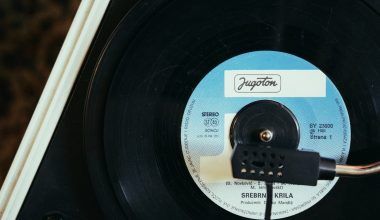Introduction to Explicit Content Labeling
The explicit content label is an important tool in the music industry that ensures listeners are aware of the nature of a track before they play it. This label, often associated with songs that contain strong language or mature themes, helps protect younger audiences while giving artists the creative freedom to express themselves fully.
But why is it so important, and what do artists and platforms gain from using it? Let’s dive deep into the world of explicit content labeling and uncover how it shapes the modern music landscape.
What Is an Explicit Content Label?
The explicit content label, sometimes called the “Parental Advisory Label,” is a warning sign. It signals that a song includes material that may not be suitable for children or sensitive listeners. This includes, but isn’t limited to:
- Strong language
- Sexual themes
- Violence
- Drug references
The label acts as a bridge between artistic freedom and audience responsibility, ensuring transparency between creators and their listeners.
Why Do Songs Need an Explicit Content Label?
If you’ve ever wondered why the explicit content label exists, the answer lies in accountability and consumer awareness. Here are the key reasons:
1. Protecting Younger Audiences
Children and teenagers are heavy consumers of music. Labeling tracks as explicit helps parents and guardians monitor what young listeners are exposed to. It creates a safer digital space for everyone.
2. Compliance with Platform Guidelines
Major platforms like Spotify, Apple Music, and YouTube have strict rules for content distribution. Explicit tracks must be clearly marked to meet their community guidelines and legal requirements.
3. Building Audience Trust
Transparency builds trust. When fans know what to expect from your music, they are more likely to engage with your work positively.
4. Avoiding Legal Troubles
Mislabeling tracks—or failing to mark explicit content—can lead to legal or contractual issues. For independent artists especially, such mistakes can hurt their reputation and career.
The History of the Explicit Content Label
The explicit content label dates back to the 1980s when debates about censorship and creative freedom were at their peak. Organizations like the Parents Music Resource Center (PMRC) pushed for content warnings to help parents make informed decisions about the media their children consumed.
The result? A black-and-white “Parental Advisory” sticker that has since become a symbol of uncensored creativity. Today, this label is digital but just as relevant.
How to Label Your Music Correctly
Adding an explicit content label is a straightforward but essential part of music distribution. Here’s how you can ensure your tracks are properly labeled:
1. Understand What Counts as Explicit Content
Know your lyrics and themes. If your song includes profanity, mature themes, or violent imagery, it qualifies as explicit.
2. Use Distribution Platforms’ Tools
Most platforms like Deliver My Tune, TuneCore, or DistroKid provide easy options for marking songs as explicit during the upload process. Be honest and consistent.
3. Double-Check Metadata
Metadata is crucial in music distribution. Ensure your track information—including its explicit status—is correct before submission. Mistakes can delay your release.
4. Follow Regional Guidelines
Some regions have stricter laws regarding explicit content. Research the guidelines for the countries where your music will be distributed.
The Impact of Explicit Content on Your Music Career
The explicit content label can have a mixed impact on your music career. Here’s how it might influence your journey:
Pros:
- Creative Freedom: Artists can express themselves authentically without worrying about backlash from audiences.
- Appealing to Mature Audiences: Explicit labels can attract fans who appreciate bold and unfiltered art.
- Professional Integrity: Proper labeling demonstrates professionalism and respect for industry norms.
Cons:
- Limited Radio Play: Many radio stations avoid playing explicit tracks, limiting exposure.
- Restricted Audience: Some listeners may shy away from explicit content, especially in family-friendly environments.
- Algorithm Impact: Certain streaming algorithms deprioritize explicit songs, reducing visibility.
Addressing Common Myths
Myth 1: “Explicit labels hurt your streaming numbers.”
Truth: While explicit tracks may face minor restrictions, they often resonate deeply with target audiences, driving loyalty and engagement.
Myth 2: “Only hip-hop or rap tracks need explicit labeling.”
Truth: Explicit themes can appear in any genre, from rock to pop. The label isn’t genre-specific.
Myth 3: “Adding an explicit label means my music is inappropriate.”
Truth: The label simply informs listeners, empowering them to make choices that suit their preferences.
How Platforms Handle Explicit Content
Platforms like Spotify and Apple Music prioritize user experience. Here’s how they handle explicit tracks:
- Spotify: Explicit songs are marked with an “E” and included in curated playlists, but they also offer a filter to hide such tracks.
- Apple Music: Users can enable parental controls to block explicit songs.
- YouTube: Explicit content is restricted for underage users through age-gated settings.
As an artist, understanding these systems ensures your music reaches the right audience.
Steps to Balance Explicit Content and Audience Reach
While labeling is important, it’s equally vital to balance your artistic vision with accessibility. Follow these tips to find that balance:
- Release Clean Versions
Creating both explicit and clean versions of your tracks widens your reach, especially for radio and playlist placements. - Strategic Marketing
Explicit music doesn’t mean less marketable. Highlight your music’s depth and creativity to appeal to a mature audience. - Engage Responsibly
Promote your explicit tracks responsibly. Engage with fans through age-appropriate channels and platforms.
The Role of Explicit Labels in Independent Music
For independent artists, the explicit content label is a sign of professionalism. It shows that you respect your audience and the platforms distributing your music. Many distribution services, such as Deliver My Tune, make it easy to manage explicit content, ensuring your music complies with industry standards.
Conclusion: The Future of Explicit Content Labels
The explicit content label is more than a warning; it’s a bridge between creativity and responsibility. As the music industry evolves, this label will continue to play a pivotal role in helping artists connect authentically with their audiences.
Whether you’re an established artist or just starting out, embracing the explicit content label ensures your music reaches the right ears without compromising your vision. So next time you release a track, ask yourself—does it need the label? The answer might just shape your success.
For further reading, explore these related articles:
For additional resources on music marketing and distribution, visit Deliver My Tune.






